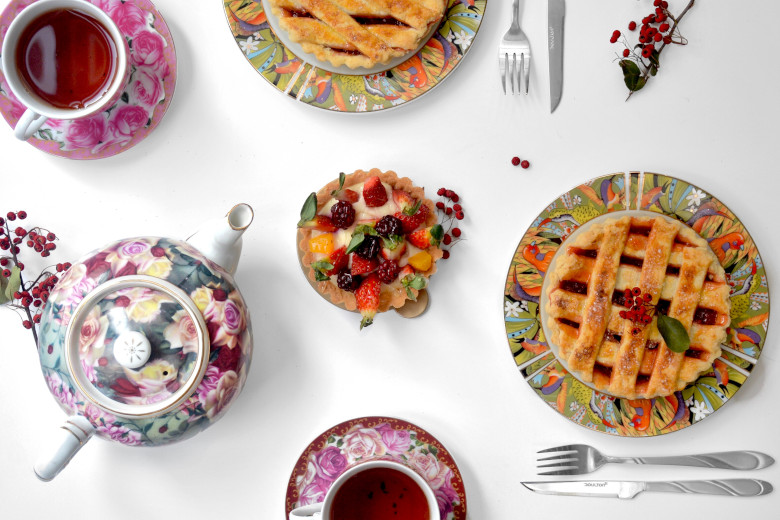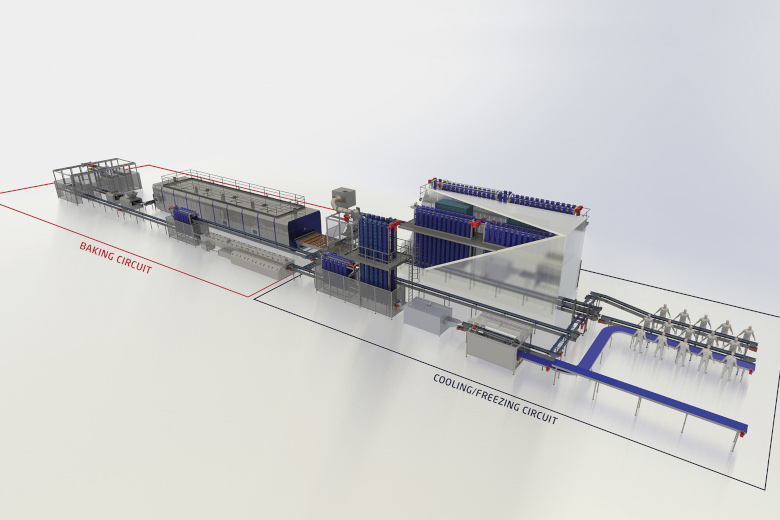
Some of the oldest patisserie creations are also an undisputed dessert staple: pies and tarts. As they are continuously evolving, various techniques can perfect product processing in industrial bakeries, preserving the artistry of the skilled patissier.
Tarts are often an interesting reflection of local cultures, combining different types of doughs with fillings, savory or sweet. They can be either open (tarts) or closed (pies) – or partially covered with a lattice. Even more flavors and textures can be brought to the creations after baking, by adding jellies, fruits, or meringue. The result: virtually endless possible combinations. “For industrial production, the baking support used is very important; whether made of aluminum or a different material, they will support the pie or tart as it travels through the various steps of its production and will sometimes be a part of the final packaging,” explains Loïc Le Denmat, patisserie expert, MECATHERM. He has been sharing know-how on preparing various specialties via his ‘Ask Loïc’ YouTube video series, one of which is dedicated to pies and tarts.
Baking is the key step when the textures are “brought to life”, as he says. The challenge: achieving a crispy crust and perfecting the final color, while preserving the delicate fillings. All kinds of creamy fillings can be used, with any seasonal or regional fruit. With this variety comes the need for flexibility and accuracy in production, especially so when dealing with natural ingredients, which require very precise process parameters. For this a precise oven is key. The M-TA oven, for example, is especially suited for baking tarts, because of its flexibility that can match the wide diversity of recipes. The Mecapatisserie line, moreover, was designed to optimize industrial performance when manufacturing tarts and pies. MECATHERM’s Xavier Gotti, Product Manager, Oven, and François Retailleau, Product Manager, Line, explain how to perfect tart production, for any recipe.
Accurate industrial baking
The answer to perfecting the baking curve required for these delicate products comes from the M-TA oven’s modular design, in which each independent module can have different baking parameters set: baking may start with a high temperature and lower it later in the process, depending on the product. For maximum flexibility, there are six possible options for heat transfer. Each heating mode can be selected per module, so more radiation can be used at the end of the baking process if the product’s color should be further enhanced, for example, or convection can be selected at the beginning when more power is needed, for volume.
Products using natural ingredients need particularly precise adjustments in terms of flow, temperature and humidity rate – for each module they travel through in the baking process. “An important point is that steam can be adjusted in the chamber to ensure a good humidity rate during baking,” Gotti highlights. Adaptability is particularly important when making fruit tarts or pies: for example, strawberries are added to the already-baked crust, and then sprayed with a jelly/glaze that protects the fruit, whereas in the case of apple pies, or tarts, the baking process is entirely different, as the fruit will go into the oven together with the crust. “This helps when using seasonal products as well as with the baker’s signature products to give a unique look. All can be achieved by changing the oven settings automatically, according to the recipe,” Retailleau also points out.
Complex equipment, simple process
MECATHERM’s tart and pie lines start with the oven and cover all subsequent production steps, including cooling and freezing. Filling stations can be set up before and after the oven. Products are automatically conveyed along the line, to simplify operations. Flexibility and frequent product changes are reflected in the design of the Mecapatisserie line. Since products running on the line can be switched even after a few hours, the line can therefore accommodate fast recipe changeovers, so that the oven is ready for the new products while the previous type of tarts or pies are still going through the final process stages. Recipe management is essential, to ensure the correct parameters are applied to the right products. The equipment incorporated in the Mecapatisserie is designed to support such fast changeovers. Having comfortable space for operators was also considered, particularly for bakers who prefer manual handling of the steps of the after-oven processes. “When making a certain type of seasonal product for two weeks every year, it’s not usually worth having a dedicated, automated system for it. For such products, depositing can be done manually, for example,” Retailleau illustrates.

A Mecapatisserie line is customized starting from the bakery’s current product list (but, new products can also be accommodated later on). All the equipment on the line will be adapted around those products, following trial runs at
MECATHERM’s demo center. Technology is then sized to match the required production capacity. For cooling and freezing, solutions such as the MVD cooler and the MVS freezer can be included, both featuring a modular vertical system, with a dedicated cold tray circuit.
Its flexibility is not limited to pies and tarts. It can also be used to produce brownies, lava cakes, financier cakes, madeleines, muffins, twinkies, sponge cakes, choux buns, eclairs, cheesecakes, macarons – and the list can continue, offering bakeries a wide range of options for expanding their portfolio with new creations.
Read the full article in Baking+Biscuit International, issue 4 – 2023.
Photo: Pexels (#6426078)


